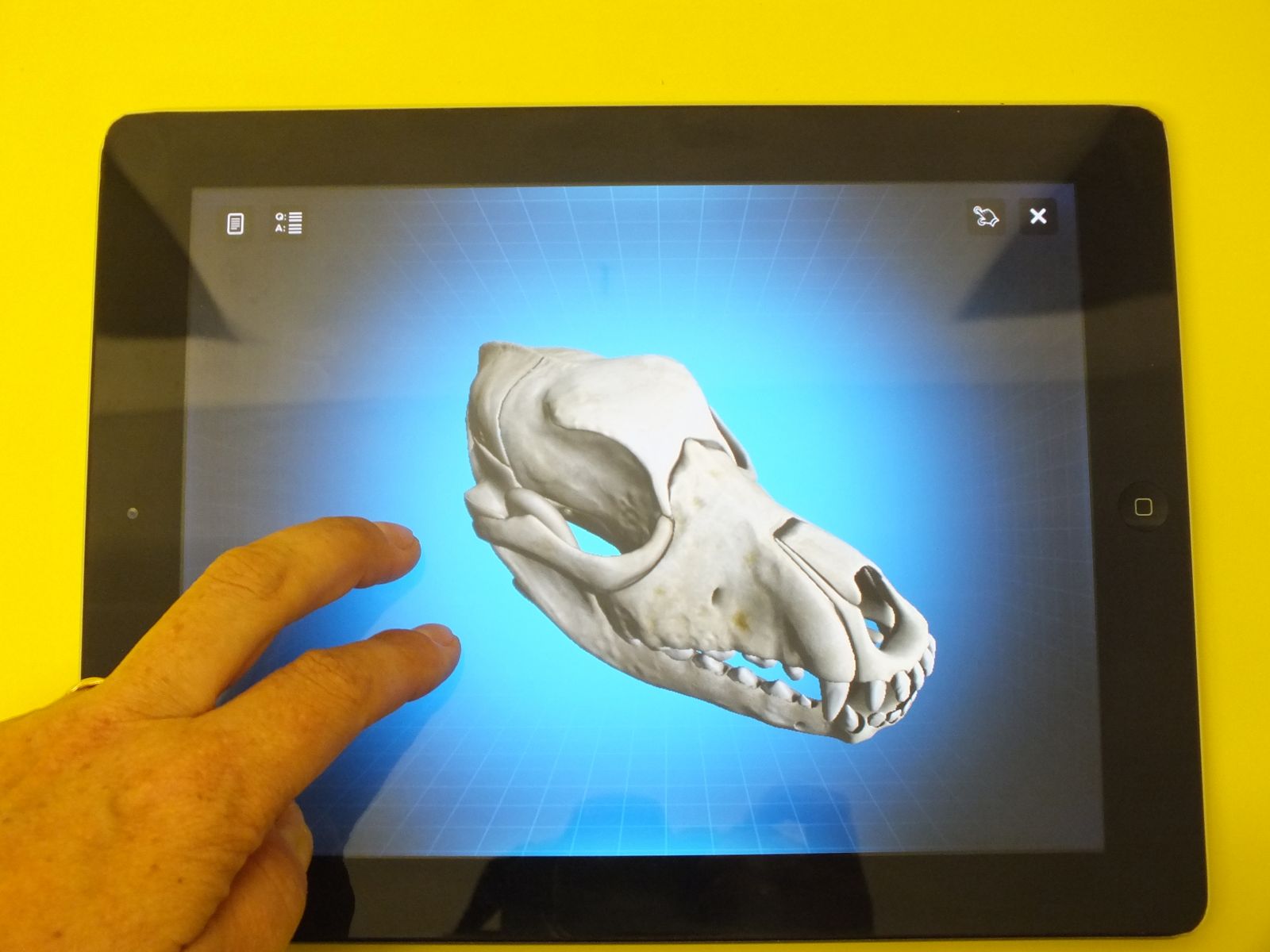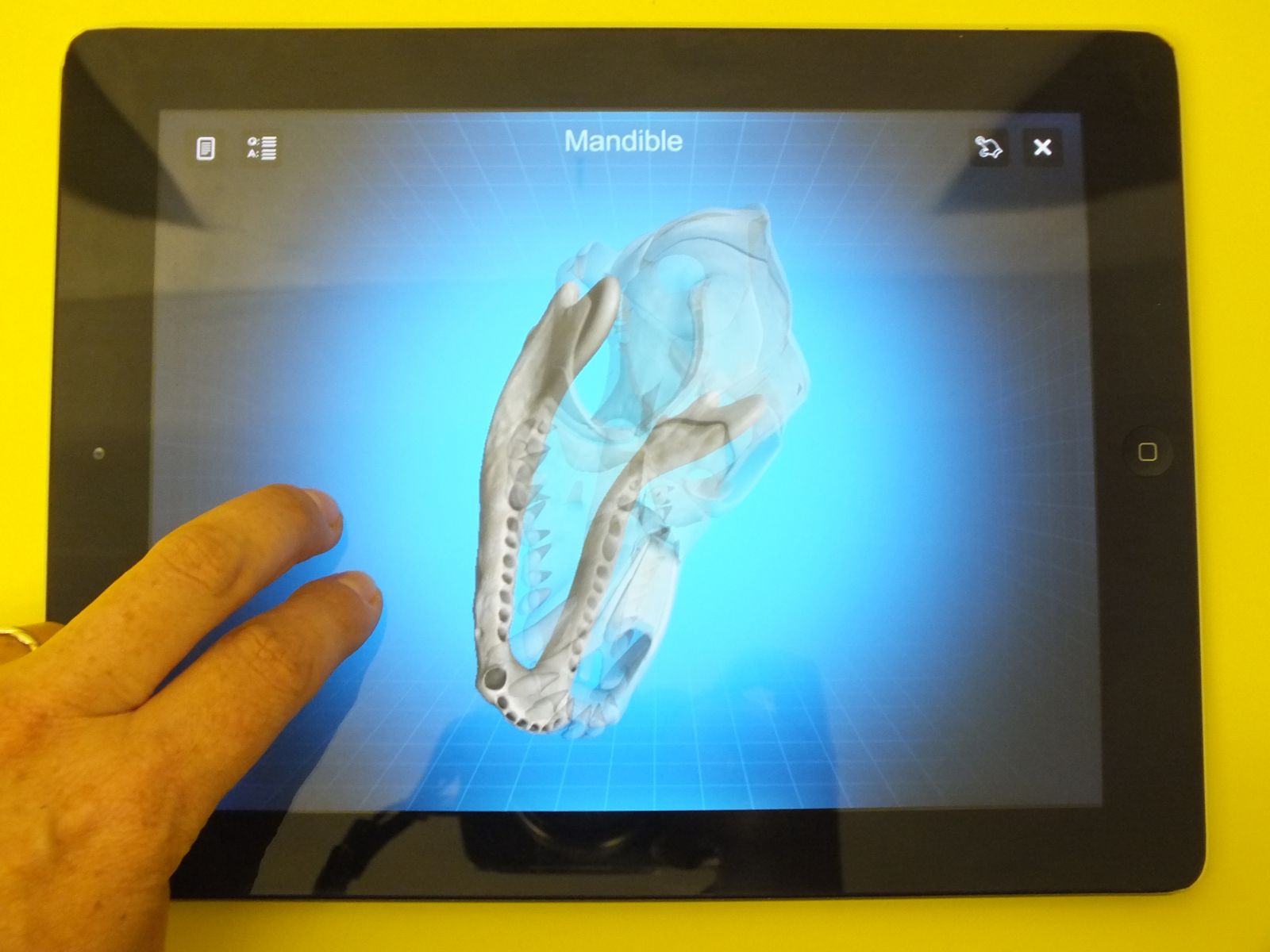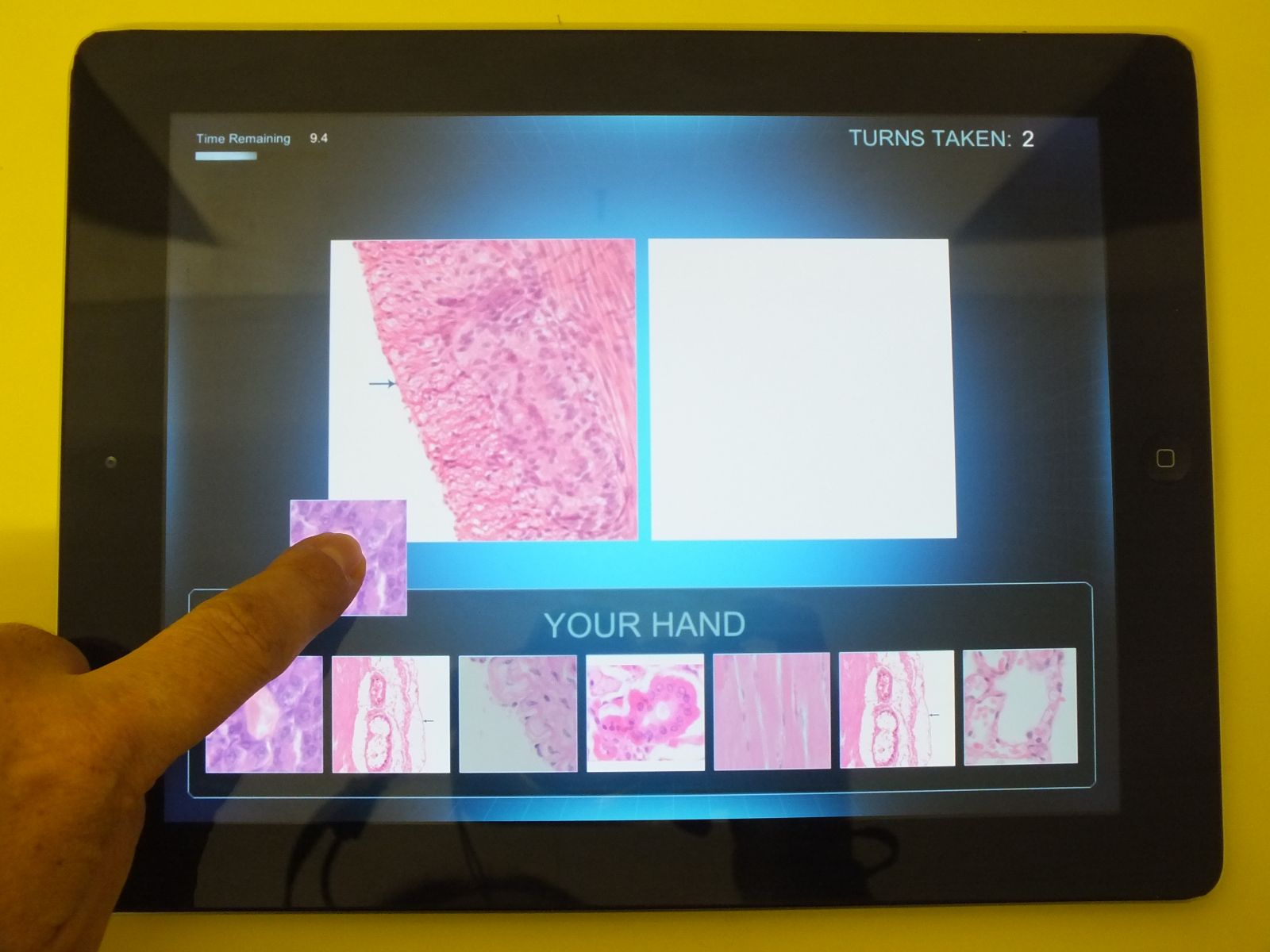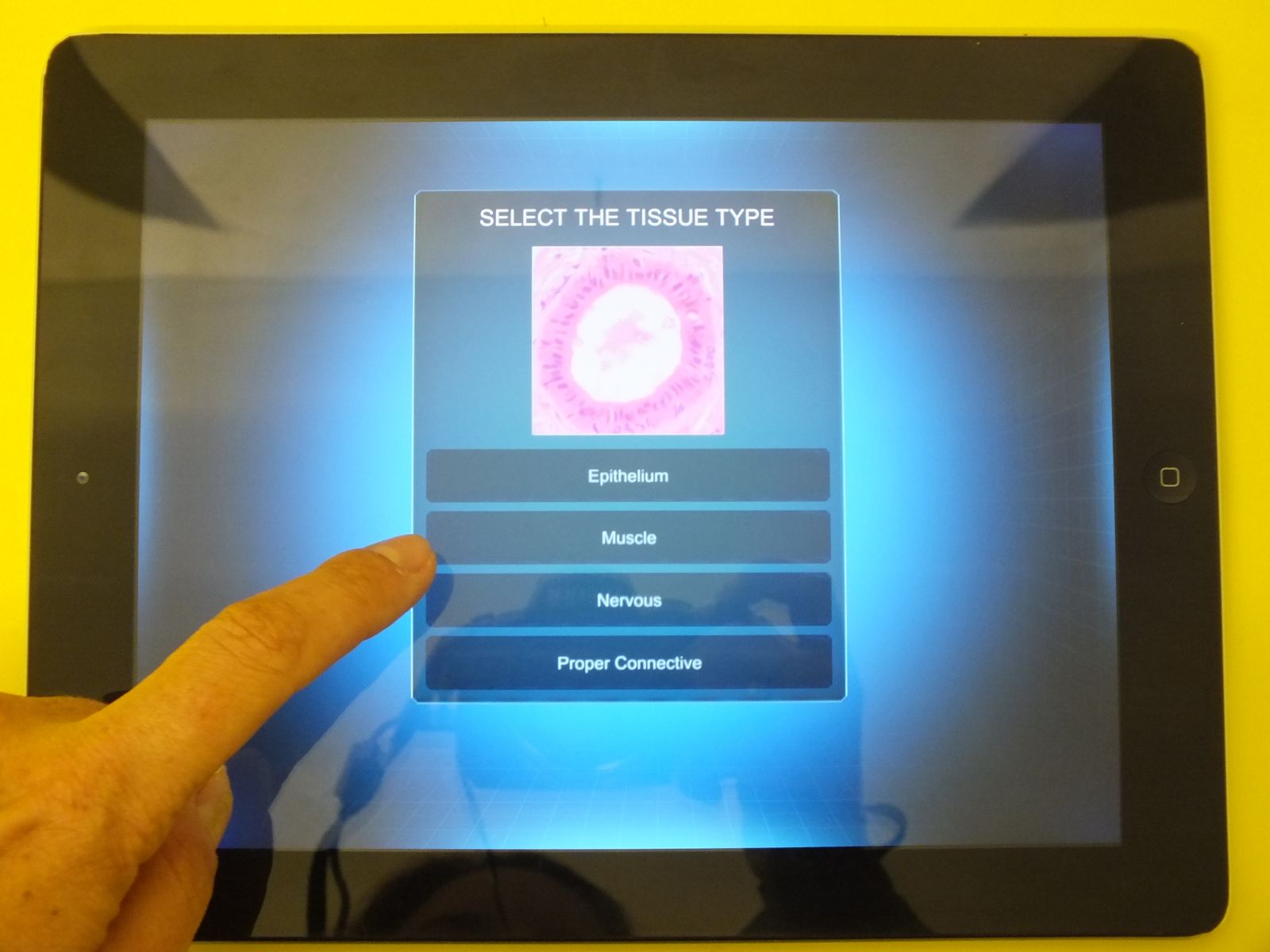
| Theme: 3AA Mobile learning and social networks | |||
 |
||||||
| Medical and Veterinary students have a positive view of the introduction of mobile device applications as part of the curriculum: Results from a survey of students from four programs | ||||||
|
||||||
Game-based mobile applications hold great potential in education but have not been extensively explored in the context of medical and veterinary education.
Students from four medical and veterinary programs (N=122) were surveyed regarding their opinions of five educational game-based applications for mobile devices. Students were allowed to explore beta versions of these game-based apps and surveyed on their personal gaming history, impressions of the apps, and ease of use of the apps. Students were compensated for their time with lunch or a gift card; maximum value not exceeding twenty dollars. IRB approval or exemption was obtained in advance.




Fig 1-4: Images of two of the prototype apps (Veterinary Bone Viewer and Histology Matching Game) in use.
The majority of students (114/122, 93%) reported having experience with playing games on electronic devices. After spending time with the apps students were overwhelmingly positive about the potential utility of similar apps in their curriculum. 110/120 (91.7%) respondents reported satisfaction with the experience, 110/119 (92.4%) felt that the apps were helpful and 116/120 (96.7%) reported that they would be willing to use these applications if they improved scores on licensing exams.
Based on the results of this survey it is reasonable to conclude that game-based apps designed for medical and veterinary medical education would be readily accepted by students, intuitive to use, and perceived as beneficial to learning. Further research is necessary to establish the efficacy of game-based apps and their relationship to educational outcomes.
Carmen Fuentealba, Associate Dean for Teaching and Learning, Ross University School of Veterinary Medicine, St. Kitts
Eric Bauman, Institute for Research and Clinical Strategy, Educational Technology & Game-Based Learning, Madison, WI.
Reid Adams, Institute for Research and Clinical Strategy, Simulation Operations, Pontiac, MI.
Greg Gilbert, Institute for Research and Clinical Strategy, Biostatistical Research, Iselin, NJ.
David Pederson, Institute for Research and Clinical Strategy, Undergraduate Medical Education, Boise, ID.
Games Learning Society, Madison, WI.
1. Game-Based Teaching and Simulation in Nursing and Health Care. Springer Publishing Company; 2012:265. https://books.google.com/books?hl=en&lr=&id=aDorbrGj48UC&pgis=1. Accessed February 7, 2015.
2. Roschelle J. Keynote paper: Unlocking the learning value of wireless mobile devices. J Comput Assist Learn. 2003;19(3):260-272. doi:10.1046/j.0266-4909.2003.00028.x.
3. Bruce-Low SS, Burnet S, Arber K, Price D, Webster L, Stopforth M. Interactive mobile learning: a pilot study of a new approach for sport science and medical undergraduate students. Adv Physiol Educ. 2013;37(4):292-297. doi:10.1152/advan.00004.2013.
4. Mccraw MA, Hall B, Martindale T. Instructing Multigenerational Students. Memphis; 2011. http://etd.lsu.edu/docs/available/etd-11092011-154402/.
5. Oblinger D, Oblinger J, Lippincott JK. Educating the Net Generation. Digit Commons @ Brockport. 2005:265. http://digitalcommons.brockport.edu/cgi/viewcontent.cgi?article=1278&context=bookshelf. Accessed December 17, 2014.
6. Sandars, J., & Morrison, C. (2007). What is the Net Generation? The challenge for future medical education. Medical Teacher, 29(2-3), 85–8. http://doi.org/10.1080/01421590601176380
7. Gee, J. P. (2003). What Video Games Have to Teach Us About Learning and Literacy. New York: Palgrave Macmillan.
8. Ellaway, R. (2014). The informal and hidden curricula of mobile device use in medical education. Medical Teacher, 36(1), 89–91. http://doi.org/10.3109/0142159X.2014.862426
9. Abdulmajed, H., Park, Y. S., & Tekian, A. (2015). Assessment of educational games for health professions: a systematic review of trends and outcomes. Medical Teacher, 37 Suppl 1, S27–32. http://doi.org/10.3109/0142159X.2015.1006609
10. Bie, M. de, & Lipman, L. (2012). The use of digital games and simulators in veterinary education: an overview with examples. Journal of Veterinary Medical Education. Retrieved from http://utpjournals.metapress.com/index/31526868667R3T36.pdf
Students in medical, medical preparatory and veterinary medical programs feel that mobile game-based applications designed to reinforce the curriculum would be useful to their education.

 Send Email
Send Email